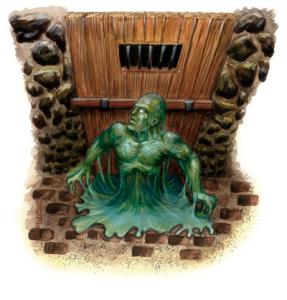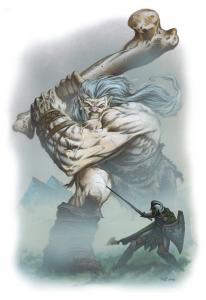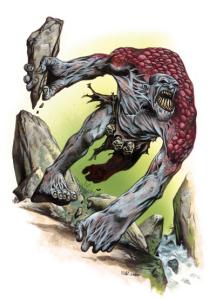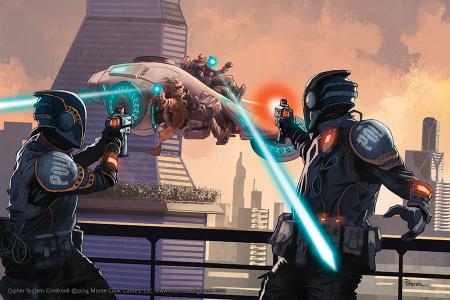Work on my Ancient Lands setting is coming along nicely and not only do I have all the components parts ready, but also got names for almost all of them. Unless you tried building a fictional world and create a compendium of all the main groups, places, and creatures, you won’t believe how terribly difficult that last part is. Making names is easy, making names that are not total garbage and sound completely made up is unbelievably hard work. And it doesn’t get easier when you get to make some 200 of them that are supposed to come from half a dozen different language families.
Now that I know where all the places are, who lives there, what their relationships with each other are, and what kinds of environments and creatures make up the world outside the settlements, the next step is both much more complex, but I think also easier. A fantasy world is not a map with names on it, but it is all about the people who live in that world and how they interact with each other. How do they behave, what do they believe, what to they want, what do they fear, what do they opposose, who has power, of what kind is that power, how do they live, how do they fight? Take the first half hour of Star Wars for example: You don’t know who any of these people are, what those places are you see, and what everything is about. But it’s still a very evocative setting, just from seeing the people interact with the world around them and each other. (Star Wars is also what I consider to be one of the greatest examples of the effective use of archetypes: The moment you see Darth Vader you know exactly what kind of character he is, and the imperial uniforms make it perfectly clear what type of Empire this is. Nobody has to say it, it’s clear because you’ve seen people like these countless times before, and you’re meant to recognize them.) In Fantasy, it is very common to do things the standard way, which means the popular image of the European middle ages. Connor Gormley wrote some interesting thoughts on why this isn’t necessarily a bad thing at Black Gate a while ago. But the Ancient Lands is specifically meant to not evoke images of a medieval world, but instead aims to feel prehistoric. The reason I think it’s also easier than chosing the elements that you want to put into your world is that from this point on you’re actually staring to thing of people and events and the possibilities now are based on the things you already have in place and don’t come purely from a vacuum.
The idea of a “prehistoric time” is a bit blurry. Originall the term refered to the periods of human civilization and culture from which we have no historic records. Only archeological finds and reports from later times, but no documents in which those people wrote down what happened during their own time. The “historic period”, as least as far as Europe, the Mediterranean, and Mesopotamia are concerned, is generally divided into Antiquity, the Middle Ages, and Modernity (which really just mean old age, middle age, and current age), while the “prehistoric period” is split up into the Stone Age, Bronze Age, and Iron Age. Antiquity is generally considered to start with the rise of the classical Greek civilization around the 5th century BC. (Which is convenient, as Antiquity also ends around 500 AD and the Middle Ages last to about 1500 AD, making it easy to remember.) It was a reasonably good idea to classify past human civilizations, but by now we know how to read Egyptian, Akadian, and Hittite and those people wrote quite a lot, so that we now have a lot of historic documents from the Bronze Age. So technically, it’s not really “prehistoric” anymore. But really, the main concern here is fantasy fiction, so when I use the term prehistoric, I mean the Stone Age, Bronze Age, and Iron Age. But even those terms are not perfect, as different parts of the world developed different technologies at different times or skipped some entirely. Southern Africa went straight from the Stone Age to the Iron Age, and it would be completely justified to say that people in Central America went straight from the stone Age to Modernity, skipping four of the six perioids completely.
And when I say “Stone Age”, I particularly mean the Late Stone Age, or Neolithic. Neolithic people didn’t have metal technology, but they were a far shot from being cave men. The Neolithic begins with the development and rise of agriculture, when people stopped wandering around hunting for food, but settled down in farming communities. And those could get quite sophisticated, with the Inca and Aztecs being great examples of how much you can do without metal technology. Conveniently for us, the move towards agriculture took place about 8,000 BC, which means from the start of human civilization to now it has been roughly 10,000 years. Always a good guideline for considering how much time passes between different periods in your fictional world.
Continue reading “Bringing prehistoric fantasy worlds to life”





